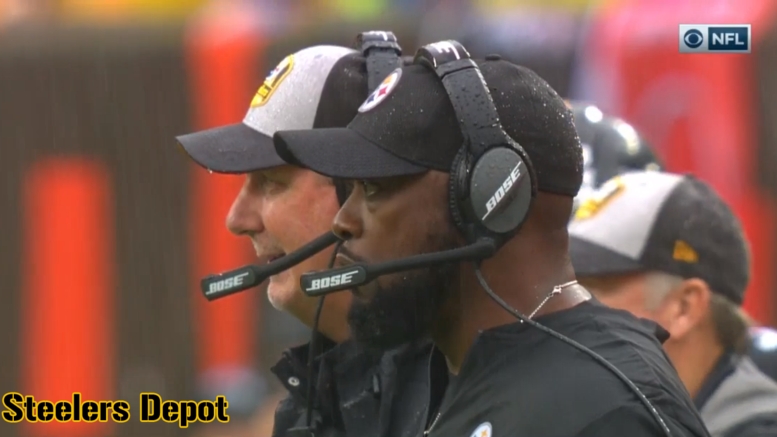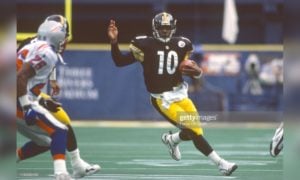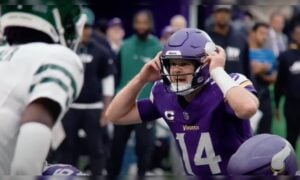Keith Butler took a long draw of his cigar, looked out longingly to the sun, and replied.
“Run defense? Now that’s a name I haven’t heard in a looooong time.”
Ok, so absolutely *none* of that happened when Butler spoke to the media Thursday afternoon. But Butler has an old-school philosophy in a new-school world. Something he freely admits and knows is a different approach to defense than his head coach. Butler talked about the two mindsets with the media.
“I’m an old linebacker who doesn’t like anybody to run on it,” Butler said in audio provided by the team. “I work for a guy who is an old wide receiver who loves to play coverage. So I work for him, he doesn’t work for me. So he’s gonna do it and rightfully so the way the game is now. I’m probably a little bit more overboard to try to stop the run. He’s not overboard trying to stop the pass. He just realizes the reality of what it is in National Football League. Now, t you’ve got to stop the passing game.”
Butler grew up playing linebacker and a good one at that, a ten-year player for the Seattle Seahawks, starting 132 games and racking up a ton of tackles. Butler was part of some sub-par Seahawks’ defenses. In his best season, a 12-4 1984 season, Seattle’s run defense shot up to top ten in the league in most categories. So he knows the value of run defense and winning.
Mike Tomlin was a high-flying wide receiver at William & Mary. He went on to find a home as a secondary coaching, focusing on how to take away the passing game and is best known as a “coverage” guy, spotted working closely with DBs during past training camps.
Despite his run-oriented focus, Butler knows the NFL’s current layout greatly favors the pass. And in particular, splash plays.
“You got to stop the big plays. I mean, if you look at what happened to the last couple of ball games, we give up a big plays. Really that game was closer than it should have been last week because we gave up a couple of big plays. We cannot do that. He’s very aware of that. So we’re gonna play different things to help our corner sometimes and sometimes put pressure on the quarterback when we can. So we got to pick and choose our shots and hopefully we pick and choose the right time to do things that we want to do.”
As we recently noted, the Steelers’ blitz rate is down this year and their zone coverage rate is up. Likely in an effort to protect a younger secondary and team allowing too many big plays in coverage. That’s caused this unit to change its personality and take a step backwards in production.
Butler and Tomlin have worked together since Tomlin was named Steelers’ head coach in 2007. Butler, then the LBs coach, before taking over for Dick LeBeau. Going forward, the question is if Butler will be on staff next year. He signed just a one-year contract after the 2020 season so it’s possible the team moves on – or perhaps Butler even retires – after the year ends. If Butler isn’t the DC for whatever reason, DL coach Karl Dunbar and assistant secondary coach Teryl Austin are two potential replacements.








